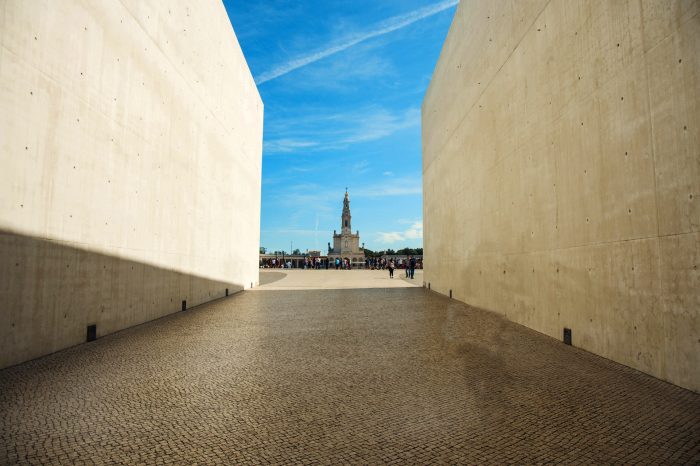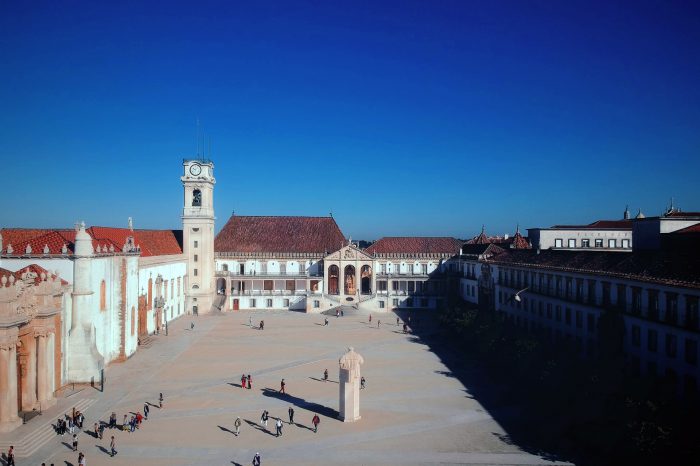Center Region
Related Tours

Fátima-Batalha-Nazaré-Óbidos
A multicultural tour, from the religious Fátima, to the medieval Batalha and Óbidos, ending in Nazaré a fisherman town with the biggest waves in the world.

Coimbra – Aveiro
Center of Portugal begins here, with the oldest university in Europe, and the picturesque Venice of Portugal.
Situated in the Centre region of Portugal you have a variety of landscapes, and a variety of offers. From beaches to mountains, to walled cities, even to holy places. Let us introduce some of the most important ones. Once the […]
Situated in the Centre region of Portugal you have a variety of landscapes, and a variety of offers.
From beaches to mountains, to walled cities, even to holy places.
Let us introduce some of the most important ones.
Once the capital of Portugal, Coimbra, this quaint and charming town is a treasure chest of stunning gardens, historical sites, fado music, and dynamic culture.
Located near the Mondego River in the centre of Portugal, Coimbra is a city of medieval churches and an intricate maze of cobbled streets that are so stunning; you’ll think you’ve slipped back in time.
In fact, many people consider Coimbra to be the most romantic city in the country.
The town gets its energy and influence from the University of Coimbra. Founded in 1209, and one of the oldest universities in Europe, you can see the entire city from its courtyard.

Set alongside the Ria de Aveiro lagoon, Aveiro (uh-vey-roo) is a lively city whose nickname is “the Venice of Portugal” because of its picturesque humpbacked bridges, high-prow boats, and the charming network of channels.
The city of Fátima is home to the Sanctuary of Nossa Senhora de Fátima, a sacred pilgrimage site for Catholics, this central Portuguese town is heavily influenced by its patron saint, the Virgin Mary.
Over six million people a year come to visit this holy place, that now houses two huge churches on a stunning esplanade in the heart of town.
No matter your beliefs, Fátima is an impressive site to see; it’s an interesting look into some of the religious culture of Portugal.
The walled city of Óbidos will take you back into the medieval age.

This popular tourist destination, remains a well preserved example of medieval architecture, that still is encircled by a fortified wall.
In it’s interior, you can visit the merchants in the streets that invite you to see and taste the local products, such as the famous Ginja, a liquor served in chocolate cups, and you even have 14 bookstores to check, one of them is even inside a church.
Splash of history
Let us begin with Coimbra.
This city was called Aeminium in the Roman times and it felt under the influence of the larger Roman villa of Conimbriga, its remains can still be visited in this days.
The first king of Portugal, Afonso Henriques took residence here, and consolidated a network of castles, who would allow him to reconquer most of Portuguese territory while he lived.
His tomb is located in the Santa Cruz Monastery, the most important monastic institution at the time of its construction.
Coimbra is as well known as one of Europes oldest universities dated of 1308.
The baroques University Tower and the Joanina Library are two of the notable landmarks of the ancient university.

Aveiro was an important economic link in the production of salt and commercial shipping.
It as always been a gathering place or preserve of birds and of great salt.
Due to its system of canals, it is known as “the Portuguese Venice”, even the boats are similar to the Italian city of Venice.
The city of Fátima is a place well known to the pilgrim Christians.
On the 13 of May of 1917, three children guarding their families sheep, claimed to have seen, an apparition, of a “lady dressed in white” and shining with a bright light.
It was the believe of the Catholic Church that this lady was actually the Virgin Mary.
Like its twin town of Lourdes in France, Fátima receives over six million visitors a year to pay respect and devotion to the holy Mary.
Óbidos walled city have seen many owners since its foundation.
Archeological evidence indicates Roman construction but it was the Moors who established a fortification in this mountain.
The first king of Portugal, Afonso Henriques took it by storming the castle in 1148.
Since then many reforms were made to the city walls, and an earthquake in 1755 resulted in the loss of Arab or Medieval inspiration architecture.
What to see and do
If you’re in Coimbra, you’ll want to be sure to make time to visit the São Gonçalinho Chapel, the Coimbra Cathedral, or even the Santa Cruz Monastery, where you can find the tomb of the first Portuguese king, Afonso Henriques.
Quinta das Lágrimas is a place for romantic people, in here you’ll find the Fonte dos Amores (Fountain of Loves), it comes from the legend that Prince Pedro and his lady-in-waiting Inês de Castro had a forbidden love affair for many years. The Fonte dos Amores was the place were Inês was murdered.
Ending this historic route, you can relax in the beaches nearby, taste the fabulous cuisine of the region, and feel like royalty.
Speaking of beaches, the Costa Nova in Aveiro is also a place to visit, and recharge batteries.

While in Aveiro you must explore it well, in fact, the town is best explored by moliceiro, a traditional boat once used primarily for harvesting seaweed and now converted for tourists.
Once you are ready for some sweets, the Ovos Moles are forbidden not to taste them.
If you repent on the sugar, and you are in Fátima, you can visit the Capelinha das Aparições, where allegedly the Virgin Mary appeared in 1917, as well as other sacred sites like Igreja da Santíssima Trindade and the golden angels of Basílica de Nossa Senhora do Rosário.
Each July, Óbidos hosts a Medieval Market, where the entire village dresses for the occasion, from merchants, jesters to jousting knights.
Not into beating metal, don’t worry, Óbidos is also home of the famous Praia D’el Rey golf complex, one of the top golf resorts in Europe, and Royal Óbidos – Spa & Golf Resort.
You can even end the day sleeping in the castle, that now houses a pousada, a chain of luxury, traditional or historical hotels.
Contact us.
- info@bythelocalstours.com
- +351 917 095 426
- Mon-Fri 09.00 - 17.00
- Rua dos Imbelos nº196 | 4455-149 Lavra
Destinations.
Infos.